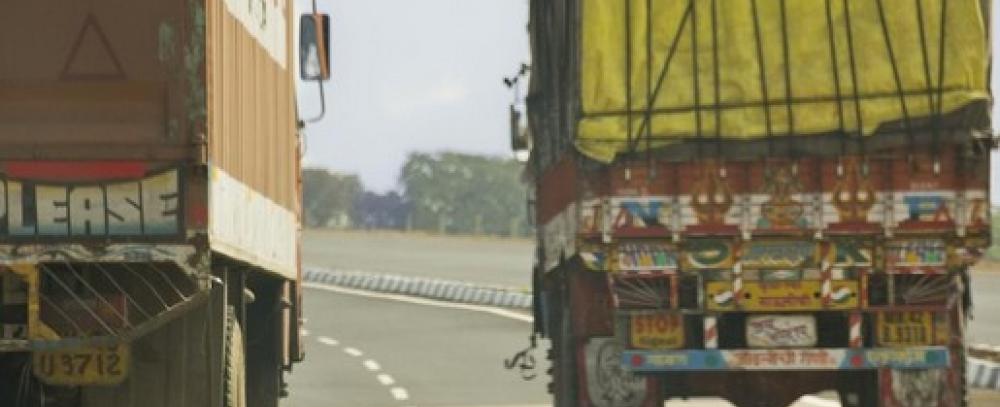
If you saw the recent television broadcast which addressed the various issues involving lorry drivers, you may have some trepidation about encountering heavy goods vehicles on the motorway. Problems raised by the programme included the growing number of lorry drivers who are not getting sufficient rest, putting themselves and other road users at jeopardy in the process. There have also been reports of drivers falsifying the recordings of their tachographs – there are many ways in which drivers can tamper with tachographs in order to complete longer journeys with less rest. If a driver is not suitably rested their levels of concentration and alertness can be diminished, making the likelihood of an accident higher.
Lorries made up just 16.5% of road traffic in July 2016 – June 2017 according to the Department of Transport. However, given the large volume of weight carried by large goods vehicles and heavy goods vehicles (LGVs and HGVs respectively), the statistics point towards a much high number of fatalities whenever they are involved in an accident. Figures indicate that lorries are involved in over half the number of fatal accidents which occur on motorways. As such, it's important that the law makes travel for large vehicles as safe as possible for all road users so that we can attempt to reduce the occurrence of accidents, fatal or otherwise, as much as possible.
The weight carried by LGVs and HGVs is one of the main contributing factors to accidents. Lorries take a longer time to reach a halt than a car would under the same circumstances. As such, lorry drivers having to stop in an emergency will take longer to slow down and reach a standstill, making the hazard of an accident much higher. Drivers are trained to maintain a suitable distance with other traffic but if they are tired, their judgement could be off. If they're pulling into the third lane to overtake, the chances are that they will be going much faster, making it even riskier to brake in an emergency.
Bad weather can also contribute to road accidents involving HGVs. Given that we get our fair share of bad weather here in the UK, allowing lorry drivers into the third lane on a motorway seems unnecessarily risky, especially if visibility is low or the roads are wet and slippery.
So, what’s the law?
Currently it is prohibited for any vehicle carrying 7.5 tonnes or above to travel in the outside lane of any three lane road. Given the worrying reports of tired drivers and faked tachograph recordings, this seems like an efficient way to help combat the likelihood of accidents.
Accidents have occurred in the past when cars have attempted to undertake lorries using the outside lane. This is owing to the fact that rear visibility can be impaired for drivers of HGVs and LGVs – there is a much bigger blind spot which means that lorries can pull back in to the inside lane without realising that a smaller vehicle is attempting to undertake them. As such, it makes sense that restricting larger vehicles to the inside lane should help prevent such incidents.
Aside from the risk of accidents, another disadvantage of LGV drivers using the outside lane is that it can be a big contributor to congestion. As larger vehicles tend to be slower and incapable of the same rates of acceleration as cars and other smaller vehicles, they tend to slow things down when they begin overtaking other vehicles. If lorries are granted access to all three lanes, problems could arise if lots of lorries are spread out over all three lanes, restricting the speed of the rest of the motorway traffic.
That said, there's also an argument to be made that keeping lorries restricted to the left-hand lane could also be difficult, or even problematic – the inside lane could also become heavily congested if lorries aren't allowed to stray from it, making it trickier for other vehicles to enter or exit at motorway junctions. A procession of lorries lumbering along on the inside lane is definitely not a desirable state of affairs of other road users either.
European Rules
In some European countries, certain restrictions are imposed on large goods vehicles using the outside lane at certain times of the day. This scheme operates in much the same way that we have bus lane restrictions at rush hour periods here in the UK. Some countries also have restrictions in place to stop LGVs using the outside lane on certain stretches of road, something which could potentially be trialled here to see if we can try to bring accident rates down.
Remember, an accident involving a lorry is far more likely to be fatal than collisions involving other types of vehicles. This fact alone makes it vital that we get the law right on this issue. Whilst there are both pros and cons to lorries using the outside lane, when it comes to a three lane motorway it seems more sensible to restrict access for HGVs. The longer stopping time, the increased risk of fatality if an accident does occur and the risk of drivers being fatigued and not fully alert all combine to make the risks outweigh any possible benefit of letting lorries drive in the third lane.


